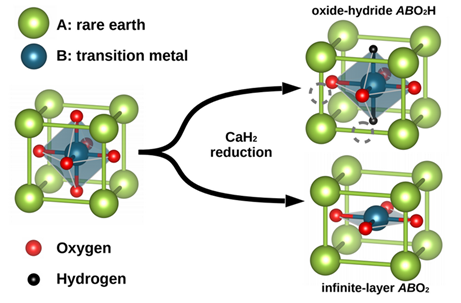Prof. ZHONG Zhicheng’s team at the Ningbo Institute of Materials Technology and Engineering (NIMTE) of the Chinese Academy of Sciences (CAS), has investigated the electronic structure of the recently discovered nickelate superconductors NdNiO2.
They successfully explained the experimental difficulties in synthesizing superconducting nickelates, in cooperation with Prof. Karsten Held at Vienna University of Technology (TU Wien) in Austria. The findings were published in Physical Review Letters (Phys. Rev. Lett.).
In August of 2019, high-temperature superconductivity was demonstrated in nickelates (i.e., Sr-doped NdNiO2), which are able to conduct electric current even at high temperatures. This seminal work heralded the nickel age of superconductivity.
However, reproducing these outstanding results appeared to be quite challenging. Other researchers even reported that their nickelates did not have superconducting properties.
To clarify this divergence, researchers at NIMTE performed calculations based on density functional theory (DFT) and dynamical mean field theory with the help of supercomputers.
The chemical reduction of ABO3 (A:rare earth; B: transition metal) with CaH2 may result in both ABO2 and ABO2H. The topotactic hydrogen (H) in nickelates was found to be energetically favorable for LaNiO2 but not for Sr-doped NdNiO2, leading to dramatic consequences for the electronic structure: that of 3d9 LaNiO2 is similar to (doped) cuprates, while 3d8 LaNiO2H is a two-orbital Mott insulator.
Therefore, H can be incorporated into the material structure of some nickelates and thus completely changes the electronic properties of the material.
Recently, this proposal was verified by researchers from the National University of Singapore (NUS). They dispersed the H that was released in the production process, and succeeded in synthesizing superconducting nickelates.
The current study might account for the difficulties in synthesizing nickelate superconductors and explained why some nickelates are superconducting and others are not. In addition, the study offers suggestions for producing nickelate superconductors: with compressive strain and Sr doping, long reaction times to reduce H2 pressure, and low temperatures.
The work was supported by the National Key R&D Program of China (No. 2017YFA0303602), Key Research Program of Frontier Sciences of CAS (No. ZDBS-LY-SLH008) and the National Nature Science Foundation of China (No. 11774360, 11904373). Calculations have been done on the Vienna Scientific Clusters (VSC) and the Supercomputing Center at NIMTE, CAS.

Fig: Two possible products in the topotactic reduction of ABO3 by means of CaH2: oxide-hydride ABO2H and infinite-layer ABO2
Contact
ZHONG Zhicheng
Ningbo Institute of Materials Technology and Engineering
E-mail: zhong@nimte.ac.cn

